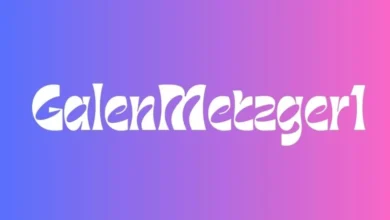VLineperol: A Breakthrough in Sustainable Energy Solutions

In the ever-evolving landscape of energy innovation, a new player has emerged, promising to redefine the way we approach sustainable solutions. Enter VLineperol, a groundbreaking technology that holds the potential to revolutionize the energy sector. In this article, we delve into the intricacies of VLineperol, exploring its origins, key features, and the transformative impact it could have on our journey towards a greener and more sustainable future.
Table of contents
The Genesis of VLineperol
VLineperol, a fusion of “V-Line” and “Perol,” signifies a unique convergence of cutting-edge technology and sustainable energy solutions. Developed by a team of visionary scientists and engineers, VLineperol represents a paradigm shift in our approach to harnessing energy from renewable sources. The technology is designed to address the challenges associated with traditional energy production and consumption, offering a more efficient and eco-friendly alternative.
Key Features of VLineperol
1. Versatility in Energy Sources:
One of the defining features of VLineperol is its versatility in harnessing energy from various renewable sources. Whether it’s solar, wind, or hydro power, VLineperol’s adaptable design allows for seamless integration with diverse energy inputs. This versatility ensures that it can be deployed in a wide range of geographic locations, maximizing its potential impact on global energy sustainability.
2. Efficient Energy Conversion:
At the heart of VLineperol lies an advanced energy conversion mechanism. Unlike traditional methods that may suffer from energy loss during conversion, VLineperol boasts an impressively efficient process. This increased efficiency translates to higher energy output from the same input, making it a promising contender for widespread adoption in both residential and industrial settings.
3. Reduced Environmental Impact:
Sustainability is a core tenet of VLineperol’s design. By relying on renewable energy sources and minimizing waste in the conversion process, VLineperol aims to reduce the environmental impact associated with energy production. This commitment to sustainability aligns with the global imperative to mitigate climate change and transition towards cleaner energy alternatives.
4. Scalability and Accessibility:
VLineperol’s scalable design allows for easy adaptation to different scales of energy requirements. Whether powering a single household or an entire community, VLineperol can be tailored to meet specific needs. This scalability enhances its accessibility, offering a viable solution for both developed and developing regions seeking reliable and sustainable energy sources.
5. Integration with Smart Grids:
Recognizing the importance of smart technology in optimizing energy distribution, VLineperol is designed to seamlessly integrate with smart grids. This integration facilitates efficient energy management, enabling real-time monitoring and adjustments based on demand. The synergy between VLineperol and smart grids contributes to a more resilient and responsive energy infrastructure.
Transformative Impact on the Energy Sector
1. Mitigating Reliance on Fossil Fuels:
VLineperol’s ability to harness energy from renewable sources marks a significant step towards reducing dependence on fossil fuels. As the world grapples with the challenges of climate change, transitioning to sustainable energy solutions becomes imperative. VLineperol presents a viable pathway to mitigating the environmental impact associated with traditional energy sources.
2. Empowering Off-Grid Communities:
In regions where access to a reliable power grid is limited, VLineperol has the potential to be a game-changer. Its scalability and adaptability make it well-suited for empowering off-grid communities, providing them with a sustainable and independent source of energy. This not only improves the quality of life in these areas but also contributes to economic development.
3. Enhancing Energy Security:
The versatility of VLineperol in harnessing energy from diverse sources contributes to enhanced energy security. By diversifying the energy mix, countries can reduce their vulnerability to supply chain disruptions and geopolitical uncertainties associated with traditional energy sources. VLineperol’s decentralized and adaptable nature aligns with the principles of a more resilient energy infrastructure.
4. Fostering Technological Innovation:
The development and deployment of VLineperol represent a significant stride in technological innovation. As researchers and engineers continue to refine and optimize its capabilities, the technology’s success may pave the way for further advancements in the field of sustainable energy. The collaborative efforts driving VLineperol’s evolution underscore the potential for ongoing breakthroughs in addressing global energy challenges.
Challenges and Future Prospects
1. Widespread Adoption:
Achieving widespread adoption of VLineperol poses a multifaceted challenge. While the technology showcases immense potential, convincing various stakeholders, including governments, businesses, and consumers, to embrace and invest in this novel solution requires strategic awareness campaigns and incentives. Overcoming inertia within established energy systems and fostering a broad understanding of the benefits will be pivotal in driving adoption.
2. Infrastructure Compatibility:
Integrating VLineperol into existing energy infrastructures necessitates addressing compatibility issues. The technology’s seamless incorporation into diverse energy grids, from urban to rural settings, requires meticulous planning. Collaboration between VLineperol developers and existing energy providers becomes crucial to ensure a smooth transition without disruptions in energy supply and demand.
3. Regulatory Frameworks:
The absence of clear regulatory frameworks tailored to accommodate emerging technologies like VLineperol can impede its integration. Governments need to proactively develop and refine regulatory policies that incentivize the adoption of sustainable energy solutions. This includes streamlining approval processes, offering financial incentives, and ensuring that regulatory standards align with the unique characteristics of VLineperol.
4. Economic Viability:
Despite its promising features, VLineperol’s economic viability must be established to attract substantial investments. Conducting comprehensive cost-benefit analyses, showcasing long-term financial advantages, and exploring potential subsidy programs or tax incentives will be essential. Demonstrating that VLineperol is not only environmentally sustainable but also economically competitive will be key to gaining the support of private investors and financial institutions.
5. Public Perception and Education:
Public perception plays a crucial role in the success of any emerging technology. Educating the public about the benefits of VLineperol, dispelling misconceptions, and fostering a positive perception are integral components of its successful adoption. Public awareness campaigns, community engagement initiatives, and transparent communication about the technology’s impact on daily life and the environment will be vital in building a supportive and informed public.
Conclusion
VLineperol emerges as a beacon of hope in our quest for sustainable energy solutions. Its versatile design, efficient energy conversion, and commitment to reducing environmental impact position it as a transformative force in the energy sector. As we navigate the complexities of a rapidly changing world, technologies like VLineperol offer not just a glimpse but a tangible pathway towards a greener, more sustainable future. The evolution of VLineperol marks a pivotal moment in the ongoing energy revolution, reminding us that innovation is the key to shaping a world where clean and accessible energy is a reality for all.
Frequently Asked Questions
1. What does VLineperol stand for, and what is its primary function?
VLineperol is a combination of “V-Line” and “Perol,” representing a technology that integrates various renewable energy sources. Its primary function is to efficiently convert renewable energy into usable power, contributing to sustainable and eco-friendly energy solutions.
2. How does VLineperol differ from traditional energy sources?
Unlike traditional energy sources, VLineperol harnesses energy from diverse renewable sources, such as solar, wind, and hydro power. Its adaptable design and efficient energy conversion process set it apart, aiming to reduce reliance on fossil fuels and minimize environmental impact.
3. What challenges does VLineperol face in terms of widespread adoption?
Achieving widespread adoption poses challenges such as convincing stakeholders, addressing infrastructure compatibility issues, and navigating regulatory frameworks. Overcoming inertia within existing energy systems and fostering public understanding are key hurdles that require collaborative efforts from governments, industries, and communities.
4. Is VLineperol economically viable, and how does it compare to traditional energy solutions?
Establishing economic viability is crucial for VLineperol’s success. Comprehensive cost-benefit analyses are essential to showcase its long-term financial advantages. Demonstrating economic competitiveness, along with environmental sustainability, is key to gaining support from private investors and financial institutions.
5. How can individuals and communities benefit from VLineperol?
VLineperol offers benefits at both individual and community levels. For individuals, it provides a sustainable and independent source of energy. At the community level, VLineperol’s scalability enhances accessibility, empowering off-grid regions and contributing to economic development. Public education and awareness campaigns play a vital role in maximizing these benefits.




